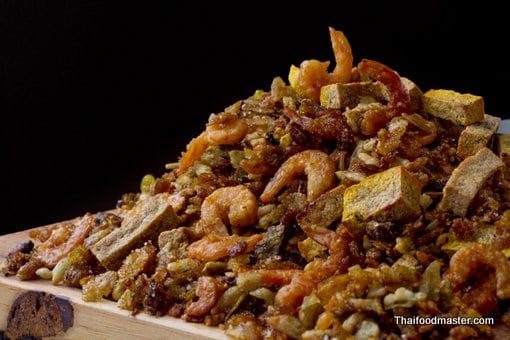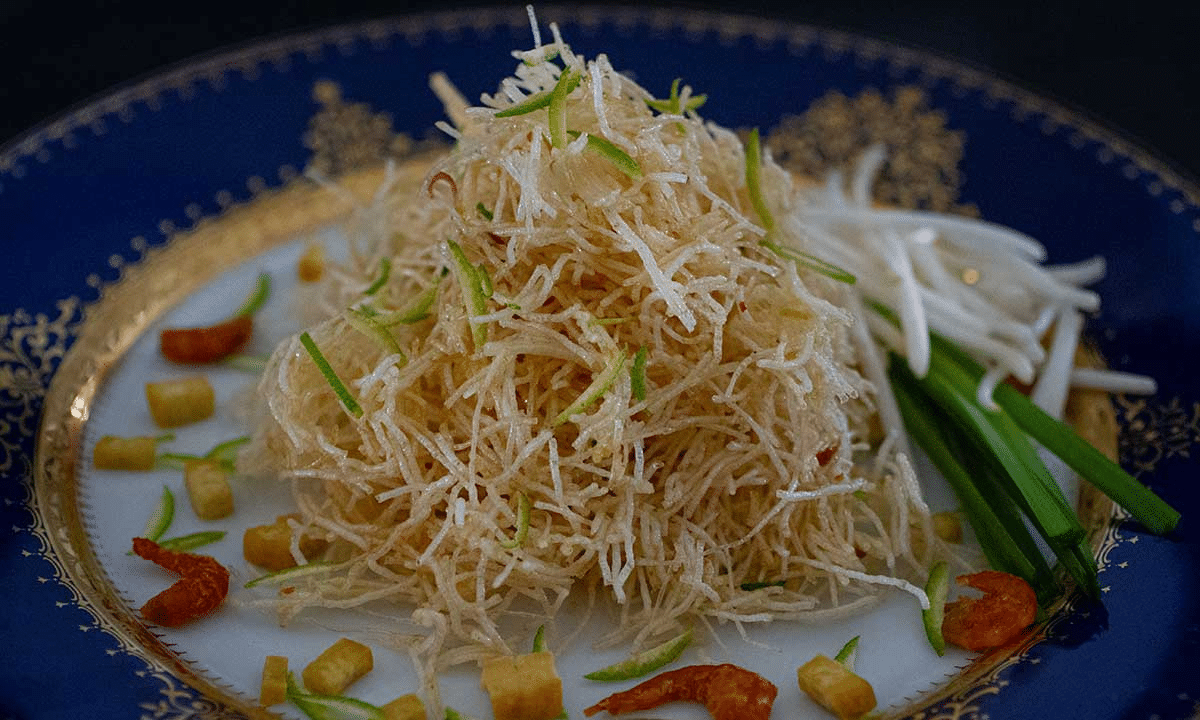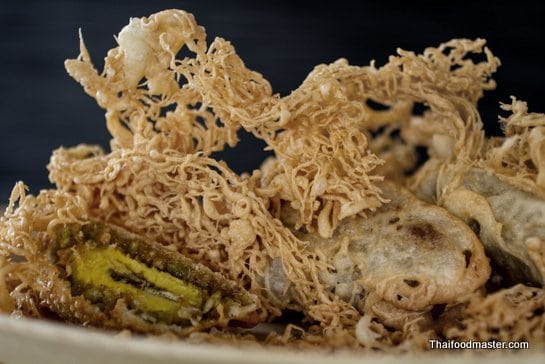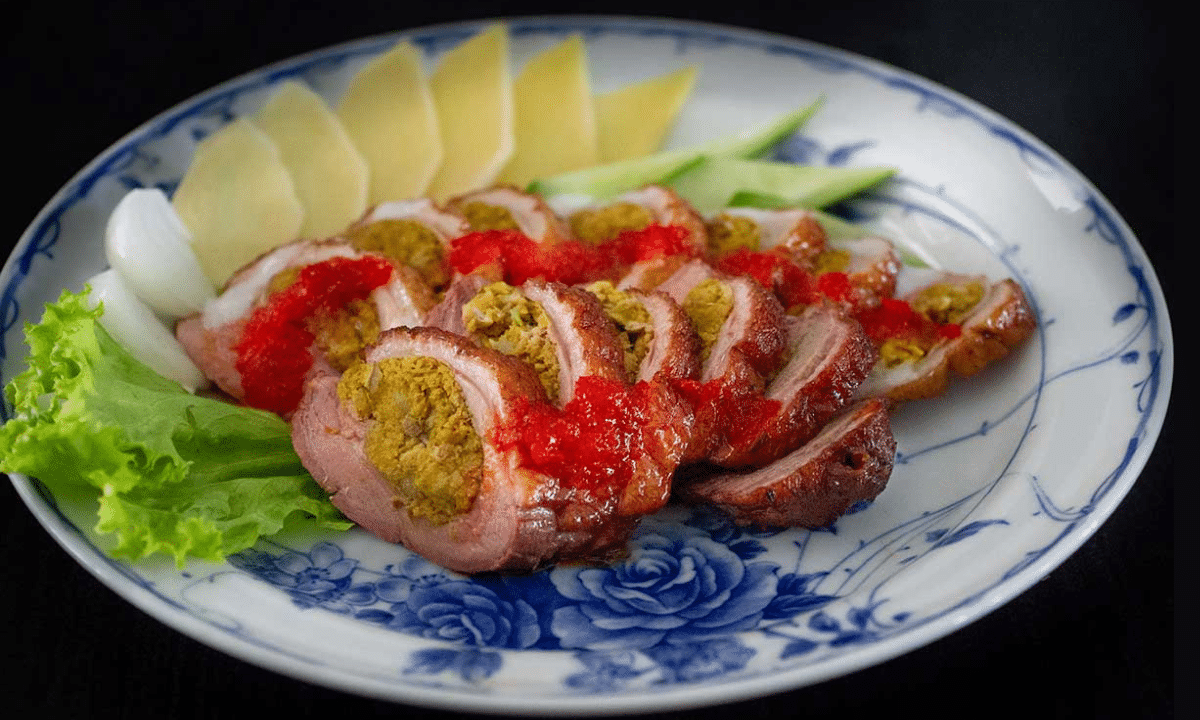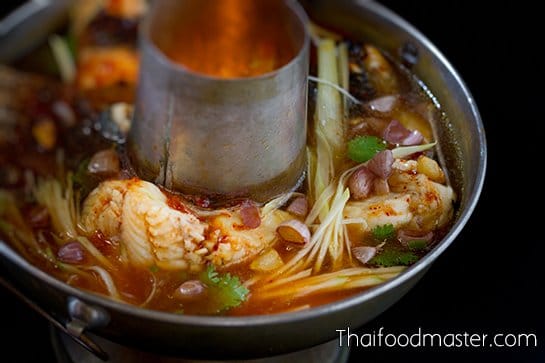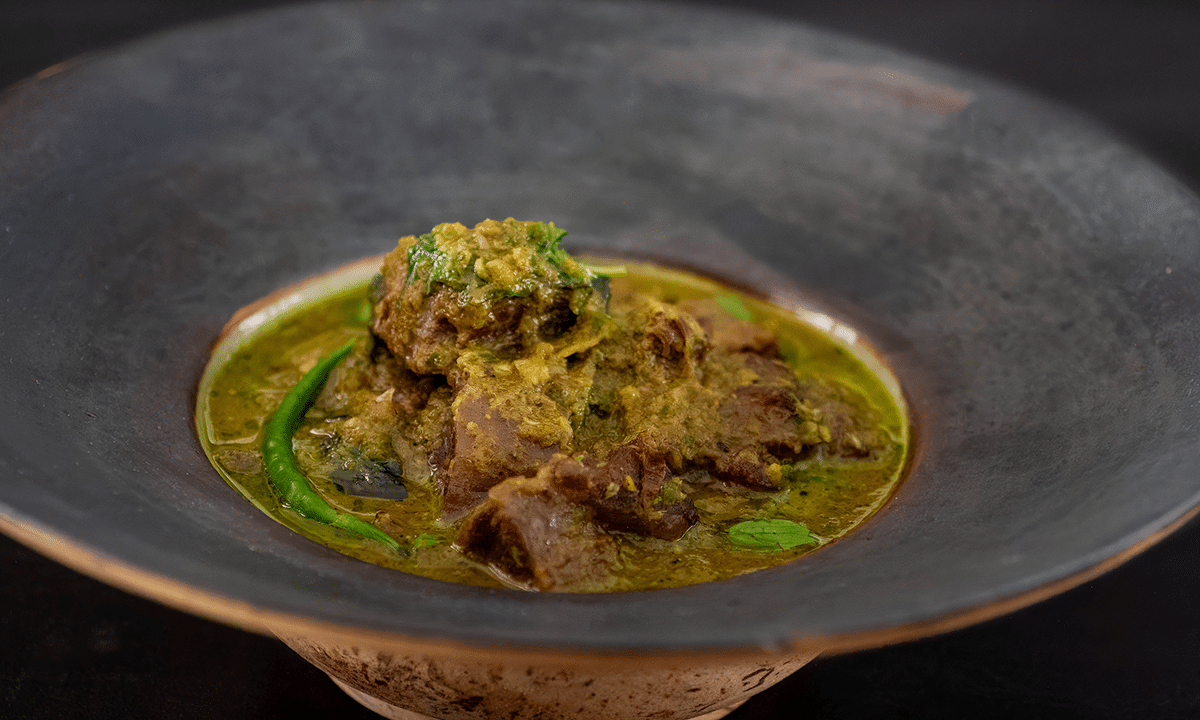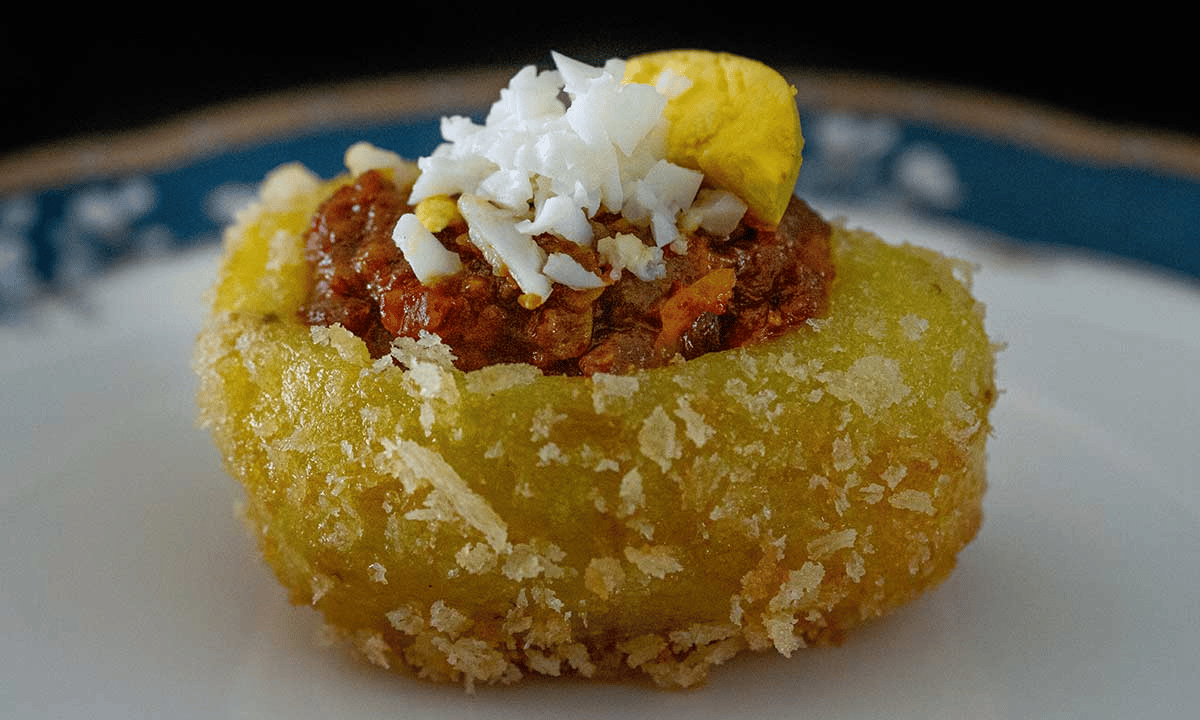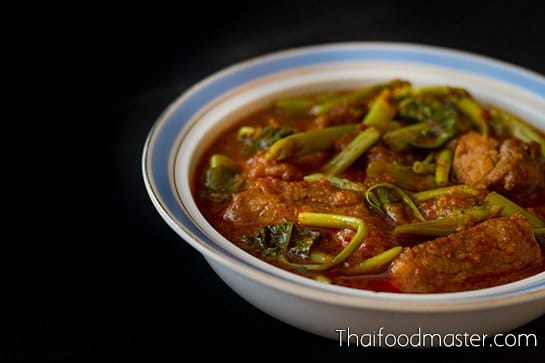Are you a chef or food lover? Join our in-person workshops in Chiang Mai, Thailand. Learn traditional techniques from a Thai cuisine expert in a serene farm setting. ✨ Reserve your spot now as spaces are limited!
Masterclasses
Practical and kitchen-tested recipes with a mix of theory, history, psychology, and Siamese culture tidbits.
Get unlimited access to Thaifoodmaster’s constantly growing library of prime professional masterclasses, articles, recipes and videos on Siamese culinary topics, available nowhere else in English.
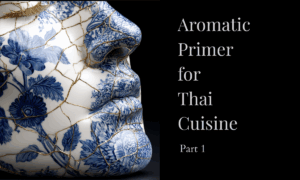
Aromatic Primer for Thai Cuisine – Part 1
How our bodies detect and process aroma through taste receptors, smell pathways, and temperature sensors—the biological and chemical foundations for developing precise aromatic language. This essential science reveals why your brain can't distinguish between chilies and actual heat, how fat and starch control aroma timing, when salt and acid trigger volatile release, and why cultural exposure physically rewires perception. Master these mechanisms first—then you can learn to name, control, and teach what you smell in Thai cuisine.
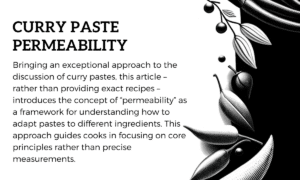
Curry Paste Permeability
Bringing an exceptional approach to the discussion of curry pastes, this article – rather than providing exact recipes – introduces the concept of “permeability” as a framework for understanding how to adapt pastes to different ingredients. This approach guides cooks in focusing on core principles rather than precise measurements.

Minced-Bird Style Curries – A Peek Into Traditional Ingredients and Cooking Methods (แกงสับนก; Gaaeng Sap Nohk)
In this article, we will explore the origins and evolution of this, resources-friendly, minced meat style of curry making in Thailand. We'll learn about historic recipes using dove, fish and other small catch, tracing this technique from the early 20th century to contemporary interpretations. Along the way, we'll compare ingredients and methods, discovering how economic necessity and agricultural lifestyle shaped the country's unique culinary identity. Join us as we peek into Thailand's ingenious cuisine through the lens of these rustic, flavorsome curries.
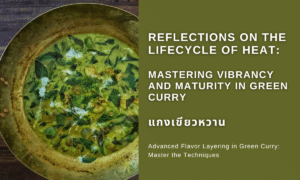
Reflections on the Lifecycle of Heat: Mastering Vibrancy and Maturity in Green Curry (แกงเขียวหวาน)
There’s an intriguing paradox at the core of Thai green curry. In making a curry paste, the traditional method – pounding an array of aromatics with a mortar and pestle – is intended to create a cohesive, well-blended aromatic profile. Yet, the green curry, at its essence, embodies vibrancy and liveliness, a spirit of growth and renewal – a telling contrast to the mature complexity of Siamese curries made with rehydrated red chilies.
To address this contradiction and preserve the dynamism of freshness while introducing complexity, we delve into advanced flavor layering techniques. These techniques are key to crafting a multidimensional flavor profile that captures the essence of nature and freshness. Our masterclass explores these methods in detail, introducing the innovative concept of animating flavor to ensure a dynamic, complex taste experience.
This exploration into Thai green curry extends beyond the kitchen, intertwining culinary techniques with historical and cultural insights. We examine the evolution of green curry, as well as its diverse influences, including its connection to Muslim cuisine, and its symbolism in the Siamese culinary tradition.
Join us for a sophisticated and enlightening session that is more than just a guide to preparing green curry. This masterclass is an immersive experience into the historical, cultural and gastronomical context of the dish. It is a tribute to the multifaceted nature of Thai green curry, in which participants will engage in the story behind every spicy, aromatic bite.
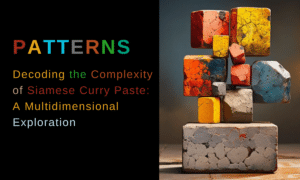
Patterns – Decoding the Complexity of Siamese Curry Paste: A Multidimensional Exploration
In this groundbreaking masterclass, I invite you to join me on a transformative journey through the complex world of Siamese curry paste. We’ll go beyond the culinary surface to examine the elaborate layers of cultural, philosophical and even metaphysical influences that shape the art of curry paste making. Utilizing a four-tier analytical framework, we’ll explore the concept of ‘sub-pastes’, each contributing its own set of cultural, medicinal and philosophical elements to the overall paste. This masterclass is designed to be more than an educational experience; it is a comprehensive guide for anyone who is committed to unraveling the intricate patterns hidden within curry paste and understanding their broader significance in Siamese culture.
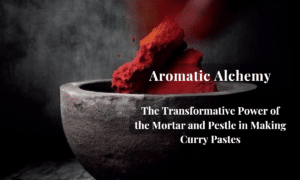
Aromatic Alchemy – The Art and Science of Pounded Curry Pastes
This Masterclass is intended to give you, the modern Thai cook, the knowledge and tools to craft better curry pastes and the ability to have full control over flavor development in your curries, allowing you to create curries that are not only rounded, gentle and intense, but are mature and yet not overworked – and that therefore present an exquisitely complex taste.
Join me as I uncover the science behind the aromatic modifications and the intricate interactions that happen inside the mortar. I aim to provide a comprehensive understanding of the complex world of pounded pastes, from the release of oils and essences to the impact of moisture and the effect of heat, oxidation and the enzymatic reactions that bring forth the paste’s unique flavor identity.
Get Access – Join Thaifoodmaster Today
Practical and kitchen-tested recipes with a mix of theory, history, psychology, and Siamese culture tidbits.
-
Get access to everything right away. Unlock more than 50 Masterclasses, over 350 recipes and Articles
Access to Thaifoodmaster’s constantly growing library of prime professional classes, articles, recipes and videos on Siamese culinary topics, available nowhere else in English.
-
GET EXTRA - New Monthly Masterclasses and Recipes
Gain access to NEW MONTHLY masterclasses as they become available.
-
1-1 support from Hanuman
1-1 support from Hanuman to help you achieve your professional Thai culinary goals
-
Live Q&A Sessions
The opportunity to join a monthly live two-hour videoconference where I can answer your questions.
-
Great Value!
one year access for the price of 3 days in-person training.
You will get everything you need to:
-
To Get inspired
When you design or build a new menu for an event or restaurant or even prepare for dinner with friends.
-
To Satisfy your curiosity.
Finally !
-
To Master Your Craft
Master your Thai cooking skills and expand your repertoire.

